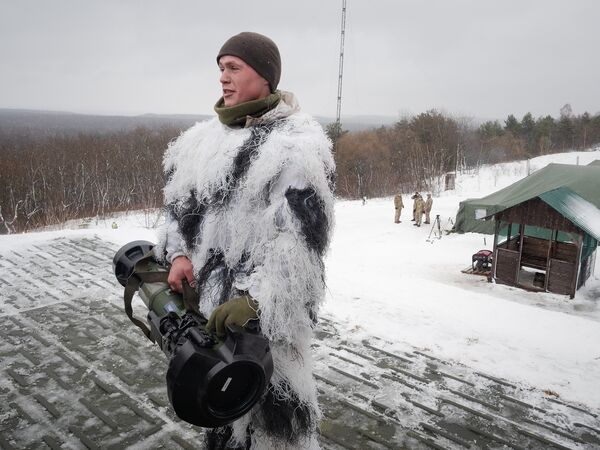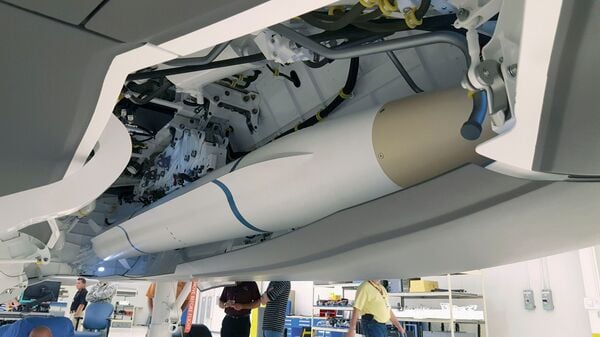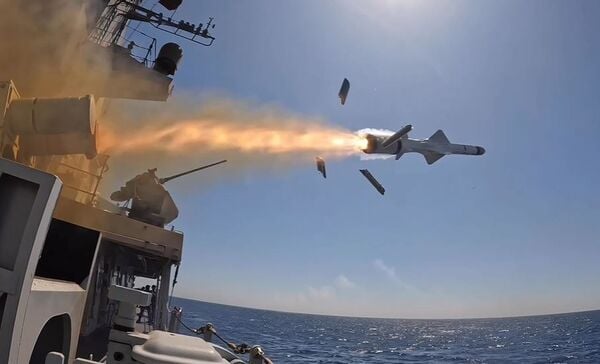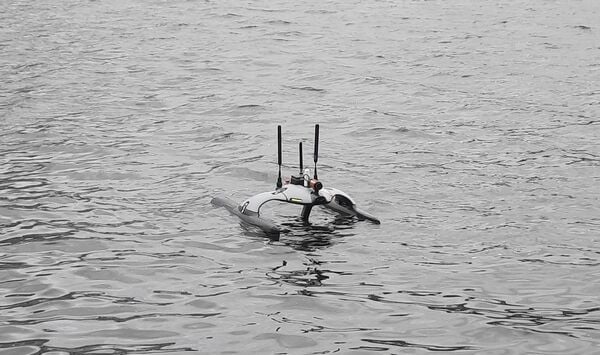- About
- Intara
- Capabilities
- Advisory
- Resources
- News
- Store
Ukraine conflict: EU countries pledge small arms, anti-tank weapons to Ukraine
02 March 2022
by Amael Kotlarski


The Ukrainian military is set to receive further NLAW anti-tank weapons, having initially been equipped with systems by the UK. (Gaelle Girbes/Getty Images)
European Union (EU) members have announced a range of military assistance packages to support Ukraine, with a range of small arms and light weapons (SALW) included.
A mix of anti-tank weapons are set to be supplied by several countries. Luxembourg has pledged 100 Next-Generation Light Anti-Tank Weapons (NLAWs), which will bolster the 2,000 sent by the UK in January.
The Panzerfaust 3 anti-tank weapon has been offered by Germany, the Netherlands, and likely Italy as well. The Netherlands has stated that it will send 50 launchers and 400 rounds of ammunition, while Germany has announced it would be sending 1,000 systems alongside 500 Stinger manportable air-defence missiles.
Although not confirmed as the Panzerfaust 3, the 1,000 anti-tank weapons pledged by Italy are likely to be of this type, coincidentally the Italian Ministry of Defence announced an order for new DM12 rounds on 25 February. Italy has also said it will supply 500 Stinger missiles.
Ukraine is set to receive a large number of single-shot, disposable anti-tank weapons. On 28 February, the Swedish government announced it would be sending 5,000 84 mm AT4 anti-tank weapons, while Norway said it would provide 2,000 66 mm M72 Light Anti-tank Weapons (LAWs).
Denmark and Finland also pledged to send 2,700 and 1,500 anti-tank weapons respectively. Although neither country specified the type of weapons, Janes believes these could include the M72EC from Denmark and M72A2/A5 from Finland. Denmark could also send AT4s, and Finland, the Armor-Piercing Infantry Light Arm System (APILAS), which the country has been slowly replacing with NLAWs. The APILAS fires a much larger and heavier 112 mm munition.
Belgium has pledged 200 anti-tank weapons, which could either be M72 LAWs, 90 mm RGW 90s, or a mix of both.
Small arms and associated ammunition have also been promised. Belgium has said it will send over 5,000 assault rifles, with at least 2,000 being older FN FNC types that the country is replacing with more modern FN SCAR rifles.
Portugal has announced that it will supply an undisclosed number of 7.62 mm G3 type rifles – locally produced as the m/963.
Among the small arms promised by Italy are heavy and medium machine guns, plus ammunition. These are likely to include the 12.7 mm M2 heavy machine gun and the 7.62 MG42/59.
The Czech Republic, Poland, and Slovakia have also announced that they will be sending small arms and ammunition that are likely to be drawn from stocks of Cold War-era weaponry that are chambered for Soviet calibres, which are predominantly used by the Armed Forces of Ukraine.
The UK and the US have also pledged to send additional weapons, which are likely to include NLAWs and Javelin systems to replace those fired or lost during the fighting. Denmark has offered components for Stinger systems.
Netherlands, Poland approved for AARGM-ER SEAD/DEAD missiles
25 April 2024
by Gareth Jennings


An AARGM-ER seen being test fitted into the internal weapons bay of an F-35 combat aircraft. The US has approved the sale of the missile to both the Netherlands and Poland. (Northrop Grumman)
The US government has approved the sale of the Northrop Grumman AGM-88G Advanced Anti-Radiation Guided Missile – Extended Range (AARGM-ER) to the Netherlands and Poland.
Announced by the US Defense Security Cooperation Agency (DSCA) on 24 April, the approvals cover 265 of the suppression of enemy air defences/destruction of enemy air defences (SEAD/DEAD) missiles for the Netherlands for approximately USD700 million, and 360 missiles for Poland for approximately USD1.275 billion. Both approvals cover related equipment, training, and support.
“The proposed sale will improve the Netherlands'/Poland's capability to meet current and future threats by strengthening its self-defence capabilities to suppress and destroy land- or sea-based radar emitters associated with enemy air defences. This capability denies the adversary the use of its air-defence systems, thereby improving the survivability of the Netherlands'/Poland's tactical aircraft,” the DSCA said of both approvals.
Indonesia to restart procurement process for more Exocet missiles
18 March 2024
by Ridzwan Rahmat


An Exocet MM40 Block 3 missile being launched from an Indonesian Navy Bung Tomo-class frigate. The country's latest attempt to replenish its stock of Exocet missiles has been delayed by non-conformity issues. (Indonesian Navy Armada I)
Indonesia will have to restart a process to replenish the country's stock of MBDA Exocet MM40 Block 3 anti-ship missiles after an earlier attempt failed because of licensing non-conformity issues.
A 24 February letter from the Indonesian Ministry of Finance's (MoF's) Directorate General of Budget Financing and Risk Management sent to various departments at the country's Ministry of Defense (MoD) confirmed that a previously granted permission to procure the missiles with foreign loans has now lapsed.
A copy of the letter was provided to Janes on 18 March by sources close to the procurement process.
In the letter, the MoF advised the respective MoD departments to resubmit a request for a total of three programmes for which the permission to take on foreign loans has lapsed, including the Exocet missile procurement.
EvoLogics preparing further deliveries of Sonobot USVs to Ukrainian armed forces
18 March 2024
by Neil Dee


EvoLogics Sonobot 5 USV being demonstrated at Oceanology International 2024 in London on 13 March. (Janes/Neil Dee)
German company EvoLogics is planning to deliver a further batch of Sonobot unmanned surface vehicles (USVs) to the Ukrainian armed forces. EvoLogics CEO Fabian Bannasch told Janes at Oceanology International 2024, held in London on 12–14 March, that his company is “currently preparing a fourth configuration of Sonobot with enhanced underwater data networking and positioning capabilities in order to guide and support complex underwater missions with dive teams, and AUVs [autonomous underwater vehicles] where the Sonobot will be the gateway buoy at the surface” for the Ukrainian armed forces. Sonobots are a family of small USVs of about 1.3 m in length that can be folded and transported by a single person.
European Union (EU) members have announced a range of military assistance packages to support Ukrain...
Latest Podcasts
Iran Israel analysis
In this podcast Janes analysts discuss the Iranian attacks on Israel on the 14 April. They highlight the military systems used by Iran and the performance and impact of these on Israel. They also discuss the implications of this attack goi...
Listen nowJanes Case Studies
Using Janes Intara to build a common intelligence picture: Russian build up on the Ukrainian border
View Case StudyNews Categories
 Defence Details
Defence Details